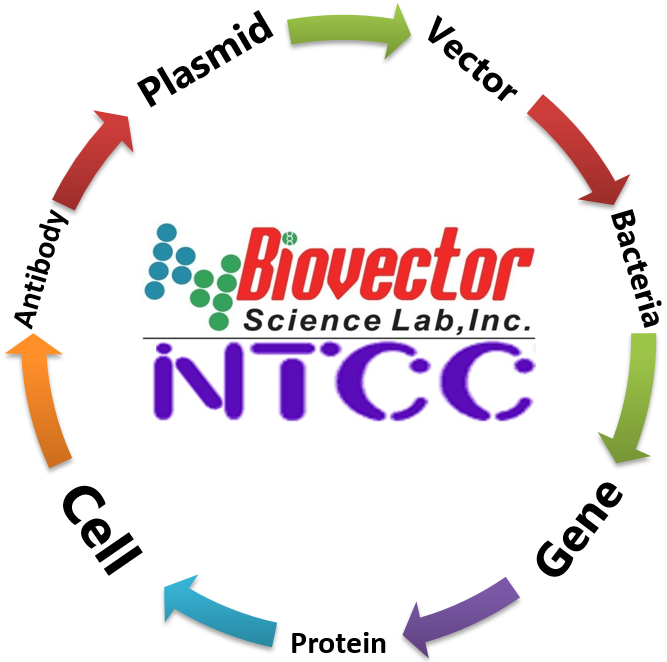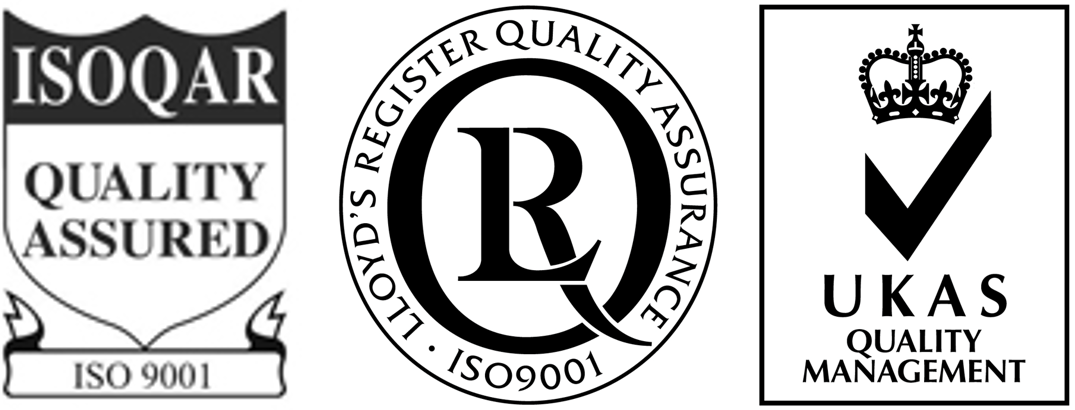BioVector's pADL-23c phagemid噬菌体展示载体质粒 BioVector NTCC质粒载体菌种细胞基因保藏中心
- 价 格:¥98965
- 货 号:BioVector's pADL-23c
- 产 地:北京
- BioVector NTCC典型培养物保藏中心
- 联系人:Dr.Xu, Biovector NTCC Inc.
电话:400-800-2947 工作QQ:1843439339 (微信同号)
邮件:Biovector@163.com
手机:18901268599
地址:北京
- 已注册
BioVector's pADL-23c phagemid噬菌体展示载体质粒
The BioVector's pADL-23c phagemid is a type 3+3 phage display vector with a cloning site for display on the N-terminal side of the full length gene III protein. Secretion in the periplasm of the fusion protein is driven by the PelB leader peptide. A HIS tag and a
Myc tag followed by an amber codon are conveniently located before the gene III protein. Phage display will be done using
bacterial strains that suppress the amber codon while growth on non-suppressive strains will result in the expression of free
scFvs or Fab fragments in the periplasm space; a classical application of this vector is the production of free scFv and
detection of its binding through the Myc tag.
The pADL™-2x phagemid vector series offers optimal characteristics for phage display with optimized expression of the
fusion protein for strong display, suppressible amber codon to direct the fusion either as a gene III fusion or as a secreted
free entity, cloning site amenable to multiple cloning strategies and varied linker and display options. The fusion protein is
under the control of the lac promoter, allowing metabolic repression by glucose and induction by IPTG. A copy of the
lambda t1 terminator located downstream gene III prevents leakiness of the transcription during induction, in particular
preventing excessive expression of the beta-lactamase and rapid consumption of ampicillin.
The vector contains two origins of replication, the f1 origin, which packages the single-stranded phagemid DNA into nascent
virions, and the pMB1 origin of replication derived from pBR322, which results in a high-copy-number phagemid; the pMB1
sequence lacks the rop gene and carries a point mutation in the RNAII transcript (G 2975 in pBR322 to T 1304 on the reverse
complement strand; Lin-Chao 1992).
Vector Map
The figure below illustrates the main features of BioVector's pADL-23c phagemid vector. The full vector sequence is available online
for download in varied formats on the product web page; the total length of the vector is 3960 bp.
Feature Table
The features of BioVector's pADL-23c phagemid vector are highlighted in the following table.
FEATURE LOCATION DESCRIPTION
TEM1 beta-lactamase 126-986 Ampicillin resistance for selection in E. coli.
pMB1 origin 1141-1760 pBR322 origin for replication in E. coli with a high copy-number.
CAP binding site 1911-1931 Mediate the catabolite repression of the lac operator in the presence of
glucose >1% w/v.
-35 signal 1946-1951 Lac promoter -35 signal
-10 signal 1970-1975 Lac promoter -10 signal
PelB leader sequence 2025-2087 PelB leader sequence for export in the periplasm of the host bacteria. The
missing terminal methionine and alanine will have to be added during the
cloning to obtain a complete leader peptide (MKYLLPTAAAGLLLLAAQPAMA)
necessary for proper removal of the leader during the export process.
HIS tag 2108-2125 Peptide H H H H H H
Myc tag 2132-2161 Peptide E Q K L I S E E D L
Amber Stop codon 2165-2167
g3p fusion coding sequence 2168-3388 Full-length gene III fusion protein coding sequence; the M13 g3p protein is
fused on its N-terminal side to the linker GPGGQGGGSEGGGSLEGAP; the
exact final sequence of the fusion depends on the cloning strategy (see
cloning site).
lt1 3398-3510 Lambda t1 terminator
oriF1 3631-3937 Origin of replication for phage f1
Experimental Procedures
General Molecular Biology Techniques
Molecular cloning and phage display should be conducted under the supervision of a qualified instructor trained to
standard safety practice in a molecular biology laboratory environment. Standard molecular biology procedures can be
found in a general molecular biology handbook such as Sambrook (1989).
Working with Filamentous Phage
Keep the bench clean and regularly wiped with 2% bleach to limit phage cross-contamination and only use filtered tips to
prevent aerosol contaminations. Phages are known to survive standard autoclaving conditions and are not removed by
0.22 µm filtration. Phages are either killed by heat-treating dry, autoclaved materials in an oven for 4 hours at 105ºC
(Phage Display (2001)) or by incubation in 2% bleach for at least 1 hour. We recommend to extensively wash with hot
water all glass and plastic-ware, then submerge (tubes) or incubate (flasks) with a 2% solution of bleach for at least one
hour. Heat-resistant glassware can then be autoclaved in an autoclave that is never used for biological waste while
sensitive plastic-ware can be used directly or at best heat-treated as described above.
Bacterial Strains and Helper Phage
Bacterial Strains
In theory, any K12 F
+
E. coli strain that suppresses the amber codon is suitable for phage display using pADL-23c. Practically
we recommend TG1 bacterial strain; TG1 is widely used for phage display and is well documented in the literature. TG1
suppresses amber codons and can also be made highly competent for transformation by electroporation. TG1 phenotype is
highlighted below:
TG1 supE thi-1 Δ(lac-proAB) Δ(mcrB-hsdSM)5, (rK
-mK
-
)
F' [traD36 proAB+
lacIq
lacZΔM15]
Helper Phage
We recommend CM13 helper phage. CM13 is made available by Antibody Design Labs under product number PH020L,
which offers a highly concentrated virion preparation, eliminating the need to generate and characterize your own helper
phage stocks. CM13 derived from M13KO7 by a single point mutation and produces on average twice more virions.
Plasmid Maintenance
Propagation and maintenance of pADL-23c is obtained on any recA1, endA1 E. coli strain using LB or 2xYT medium
supplemented with ampicillin 100 µg/ml as a selection marker, without glucose, and incubated at 37ºC with agitation.
Phagemid pADL-23c is a derivative of pBR322 with a high copy number origin of replication and usually gives high yields of
plasmid DNA with most standard laboratory strains such as XL1-blue or DH5α. Some DNA stabilizing strains are known to
produce smaller amounts of plasmid DNA. In case of issues, we recommend using XL10-Gold® from Agilent Technologies,
Inc., on which pADL-23c plasmid DNA can be isolated in large quantities.
pADL-23c Phagemid Instruction Manual 9
Cloning into pADL-23c
Primer Design and PelB Leader Sequence
A complete PelB leader sequence MKYLLPTAAAGLLLLAAQPAMA is necessary for export in the periplasm and proper
removal of the leader peptide by host proteases. In the following schema, where [NNN] represents the insert sequence and
[Xxx] the translated amino acid sequence, the short hexanucleotide ATGGCN must be appended immediately to the first SfiI
site to obtain a complete PelB leader encoding sequence; cleavage will occur on the C-terminal side of the terminal alanine
(codon GCN).
BglI/Sfi I Spe I BglI/Sfi I
| | |
yLeuLeuLeu LeuAlaAlaG lnProAlaMe tAla [Xxx] ThrSerGlyP roGlyGlyGl
3220 ATTGTTATTA CTCGCGGCCC AGCCGGCCAT GGCN [NNN] ACTAGTGGCC CGGGAGGCCA
Retention of the SpeI site is optional during cloning and the encoded dipeptide ThrSer is not known to interfere with
display.
Cloning in pADL-23c Using BglI/SfiI Sites
Large libraries in the 1 x 109
range and above can easily be constructed using the double BglI/SfiI cloning site.
WORKING WITH BGL I/SFI I SITES
The SfiI restriction enzyme recognizes rare 8-base-long interrupted palindromes GGCCNNNN/NGGCC and leaves 3-
nucleotide-long overhangs after digestion. The pADL-23c cloning site contains one SfiI site close to the end of the PelB
leader sequence and a second SfiI site 8 nucleotides apart from the first site. The PelB sequence of the empty vector has an
early termination by an ochre stop codon and no gene III protein is produced by the vector alone.
The SfiI restriction enzyme requires two copies of its recognition sequence for cleavage to occur; cleavage of the two sites
happens simultaneously through interaction of two SfiI tetramers (Wertzell 1995). Vectors bearing two sites very close to
each other are cut in trans and digestion might not complete. Therefore we strongly recommend opening pADL-20c with
the alternative BglI restriction enzyme, which cuts the shorter 6-base-long interrupted palindromes GCCNNNN/NGGC and
generates identical overhangs.
Sites open with BglI will re-ligate with sites open with SfiI as long as overhangs are complementary. Practically, the
pentanucleotide NNNNN must be identical to handle both re-ligation (complementary overhangs) and conservation of the
amino acid sequence (proper PelB sequence or linker to protein III). Since the overhang of the two BglI/SfiI sites are non_xfffe_palidromic and different, a cut empty vector cannot ligate onto itself; it is therefore possible to follow a ligation reaction by
minigel analysis since remaining unligated vector or unligated insert will migrate unchanged at their expected size.
PREPARATION OF VECTOR DNA FOR CLONING
1. On ice add successively water, BglI buffer (1x final), pADL-23c vector and BglI enzyme 5 units/µg DNA; make sure the
enzyme volume does not to exceed 1/10 of the total reaction volume.
2. Incubate overnight at 37ºC.
3. Inactivate for 20 min at 70ºC.
4. Confirm the digestion by DNA analysis on a minigel.
5. Purify the cut vector.
pADL-23c Phagemid Instruction Manual 10
For routine cloning, a standard DNA purification kit can be used directly after the digestion to remove the excess of buffer,
the small DNA stuffer and leftover restriction enzyme. For library construction, phenol/chloroform extraction and/or gel
purification may be required.
PREPARATION OF INSERTS
SfiI digestion should be rapid and complete in 4 hours especially for fragments longer or equal to 200 bp where sites are cut
in cis. BglI may be used alternatively when the insert sequence is known and therefore is not recommended for building
antibody libraries.
Cloning using NotI-SpeI sites
The NotI site located in the first half of the PelB leader encoding sequence may be used in conjunction with the SpeI site to
clone inserts. This strategy has been applied in some early phage display vectors. Consult your restriction enzyme
distributor resources to identify a buffer compatible with both enzymes and follow the concentration schema given above
to conduct the digestion. NotI and SpeI can be inactivated by heat before DNA purification.
Sequencing of Inserts
The following primers give both strong PCR amplification and sequencing traces. Primer locations can be found in the
corresponding GenBank sequence file.
Forward or Sense Primers
phiS2 5’-ATGAAATACCTATTGCCTACGG
phiS4 5’-GCGGATAACAATTTGAATTCAAGGAGACAG
Backward, Antisense or Reverse Primers
psiR2 5’-CGTTAGTAAATGAATTTTCTGTATGAGG
psiR3 5’-GCGTAACGATCTAAAGTTTTGTCG
Nested Sequencing
Often it is easier to sequence an insert by PCR on the bacterial culture supernatant or directly from a colony rather than on
tediously isolated plasmids. Use the outward primers phiS2 and psiR3 together with a DNA polymerase not inhibited by
bacterial cultures such as TAQ polymerase for the PCR and sequence the insert with the nested reverse primer psiR2. Use
less than 1 µl of bacterial culture supernatant per 50 µl-PCR reaction or the touch of a toothpick on a colony as DNA
template.
Phagemid Virion Production
A superinfection by a helper phage is necessary for phagemid pADL-23c-containing bacteria to produce virions. Please,
consult the M13KO7 or CM13 helper phage manual for optimal conditions of superinfection. We recommend a rich medium
such as 2xYT medium supplemented with ampicillin 100 µg/ml, kanamycin 50 µg/ml (when M13KO7 or CM13 helper phage
are used), no glucose or less than 0.1% w/v, and incubation from 8 h to overnight at 30ºC and 250 rpm. Supplementation
with IPTG is not necessary to achieve display on the phage with pADL-23c. We recommend adding the helper phage when
the bacterial culture reaches an optical density at 600 nm between 0.4 OD and 0.5 OD; large amounts of non-superinfected
cells due to immunity to superinfection will decrease virion production above 0.5 OD while disparities caused by differences
pADL-23c Phagemid Instruction Manual 11
in phage growth rates will be amplified at a lower OD. Immunity to superinfection refers to the difficulty to transduce
bacteria when protein III is expressed, as it is the case when with phagemids expressing a full-length pIII fusion protein.
Notes
v Supplementation with IPTG is not necessary during virion production but is recommended for the expression of free
antibodies in the periplasm with the non-amber suppressive SS320 bacterial strain.
v Shorter incubation times 6 to 8 h long will produce less virions; we have not seen improvement of display on shorter
incubation times; inversely, we have not seen sign of proteolysis of the linker after overnight incubation. Always use
freshly prepared buffers from commercial concentrates during virion preparations to limit sources of proteolysis.
Proteolysis usually occurs on concentrated virions; always prepare virions quickly and on ice.
v Kanamycin 50 µg/ml is enough to ensure selection with derivatives of M13KO7. Higher concentrations may be
needed if your culture medium contains phosphate salts.
Supplier来源:BioVector NTCC Inc.
TEL电话:400-800-2947
Website网址: http://www.biovector.net
- 公告/新闻




